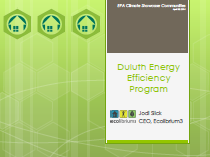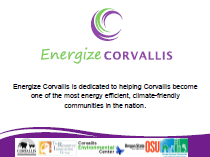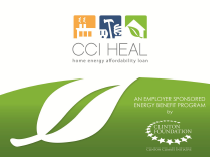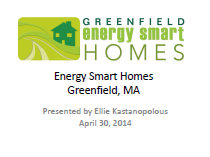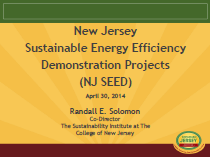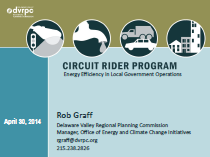Learning from EPA’s Climate Showcase Communities
You will need Adobe Reader to view some of the files on this page. See EPA’s About PDF page to learn more.Communities learn best from other communities. In the course of completing their climate and energy projects, EPA’s Climate Showcase Communities learned a lot that can help others interested in starting or expanding their own climate and energy programs. We have collected their knowledge, resources and tips here. These approaches can be used or adapted to fit the needs of communities across the country.
These Tip Sheets were inspired by the experiences and expertise of EPA’s Climate Showcase Communities (CSCs). Each Tip Sheet focuses on a different aspect of program implementation and highlights best practices and helpful resources and recommended resources for other communities interested in pursuing similar projects.
2. Community-based Social Marketing
 Community-based social marketing (CBSM) uses direct neighbor-to-neighbor communication and influence to promote behavior change. In-person communications are often complemented by electronic social media tools.
Community-based social marketing (CBSM) uses direct neighbor-to-neighbor communication and influence to promote behavior change. In-person communications are often complemented by electronic social media tools.
3. Working Across Ideological Differences
 Within communities, people have varying views when it comes to climate change. Many communities have found ways to work across ideological differences and focus on common values and goals.
Within communities, people have varying views when it comes to climate change. Many communities have found ways to work across ideological differences and focus on common values and goals.
4. Conducting and Evaluating Pilot Projects
 Pilot projects are an opportunity to “test the waters” for your project on a small scale, provide insight and data on what works, and adjust your strategy for full-scale implementation.
Pilot projects are an opportunity to “test the waters” for your project on a small scale, provide insight and data on what works, and adjust your strategy for full-scale implementation.
6. Award and Certificate Programs
 Award and certificate programs publicly recognize and reward organizations that meet criteria for achieving sustainability goals or win a competition among organizations.
Award and certificate programs publicly recognize and reward organizations that meet criteria for achieving sustainability goals or win a competition among organizations.
9. Working with Early Adopters
 “Early adopters” are businesses or individuals who participate in a program early on in its development and whose candid feedback help improve program delivery. They can be effective messengers to their peers and help your program build a track record of success.
“Early adopters” are businesses or individuals who participate in a program early on in its development and whose candid feedback help improve program delivery. They can be effective messengers to their peers and help your program build a track record of success.
10. Traditional Media Strategies
 Traditional media—such as TV, radio, and print—can bring attention to newsworthy programs, raise their visibility, and motivate participation.
Traditional media—such as TV, radio, and print—can bring attention to newsworthy programs, raise their visibility, and motivate participation.
11. Identifying and Working with Experts
 Expert individuals and organizations can help programs tap into knowledge and experience in program design and implementation, as well as helping them to evaluate program success.
Expert individuals and organizations can help programs tap into knowledge and experience in program design and implementation, as well as helping them to evaluate program success.
18. Working with Institutional Partners
 Partnering with organizations, such as other jurisdictions, utilities, complementary programs, community-based organizations, and others, can help you implement your program and achieve your collective goals.
Partnering with organizations, such as other jurisdictions, utilities, complementary programs, community-based organizations, and others, can help you implement your program and achieve your collective goals.
19. Working in Small or Rural Communities
 Small and rural communities are home to up to 80 percent of the population in some states. These communities offer several unique opportunities for engaging residents in sustainability initiatives, as well as challenges related to funding, access, and capacity.
Small and rural communities are home to up to 80 percent of the population in some states. These communities offer several unique opportunities for engaging residents in sustainability initiatives, as well as challenges related to funding, access, and capacity.
This guide was developed for local climate and clean energy (i.e., energy efficiency, renewable energy, and combined heat and power) program implementers to help create or transition to program designs that are viable over the long term by considering how programs create and deliver value for target audiences and partners, how they raise revenue, and how they can operate cost effectively. This guide also has universal applications for basic principles of program design, but is based on experiences with climate and energy programs.
In April 2014, EPA hosted the first Climate Showcase Communities Replication Workshop in Baltimore, Maryland. The workshop highlighted successful local and tribal government climate and energy projects and programs that can be replicated in communities across the United States. Local government staff that designed and implemented nearly 20 programs that are achieving meaningful greenhouse gas reductions and other benefits for their communities gave presentations that shared best practices, tools, and resources that you can use to catalyze similar action in your own community. All presentations from the workshop are available below. Please contact us if you would like to get in touch with any of the presenters.
EPA worked with Climate Showcase Communities grantees to develop in-depth case studies of selected projects that were especially well-suited for replication by other communities in the United States. View these case studies for details on each project, including costs and benefits, challenges overcome, and useful tips for replicating the project in other communities.
![]() Central Upstate New York: The regional planning and development board created a program that encouraged and incentivized communities to establish greenhouse gas inventories, develop climate action plans, empower citizens to reduce energy consumption, engage the community, and implement clean energy demonstration projects.
Central Upstate New York: The regional planning and development board created a program that encouraged and incentivized communities to establish greenhouse gas inventories, develop climate action plans, empower citizens to reduce energy consumption, engage the community, and implement clean energy demonstration projects.
 Denver, Colorado: A neighborhood-scale energy challenge prevents 36,400 metric tons of CO2 emissions annually—equivalent to the annual energy use of more than 3,000 homes.
Denver, Colorado: A neighborhood-scale energy challenge prevents 36,400 metric tons of CO2 emissions annually—equivalent to the annual energy use of more than 3,000 homes.
 Eugene, Oregon: An individualized outreach program to reduce the number of drive-alone car trips helped residents of the target area reduce their vehicle miles traveled by 686,000 miles per year, avoiding 253 MtCO2e in greenhouse gas emissions each year—equivalent to the annual emissions from 53 cars.
Eugene, Oregon: An individualized outreach program to reduce the number of drive-alone car trips helped residents of the target area reduce their vehicle miles traveled by 686,000 miles per year, avoiding 253 MtCO2e in greenhouse gas emissions each year—equivalent to the annual emissions from 53 cars.
![]() Salt Lake City, Utah: The city developed a sustainable transportation campaign that avoided nearly 11 million miles of single-occupant vehicle travel each year.
Salt Lake City, Utah: The city developed a sustainable transportation campaign that avoided nearly 11 million miles of single-occupant vehicle travel each year.
 Springfield, Massachusetts: Springfield hired technicians to perform preventive maintenance on the mechanical and electrical systems in public school buildings, improving energy efficiency and indoor air quality. The technicians trained custodial staff so they could continue maintenance after the project ended.
Springfield, Massachusetts: Springfield hired technicians to perform preventive maintenance on the mechanical and electrical systems in public school buildings, improving energy efficiency and indoor air quality. The technicians trained custodial staff so they could continue maintenance after the project ended.
![]() West Chester, Pennsylvania: An energy conservation partnership between a school district and local businesses saved the district more than $280,000 in energy costs annually while providing learning opportunities for 40 students.
West Chester, Pennsylvania: An energy conservation partnership between a school district and local businesses saved the district more than $280,000 in energy costs annually while providing learning opportunities for 40 students.
Learn about the rest of the Climate Showcase Communities’ projects.














